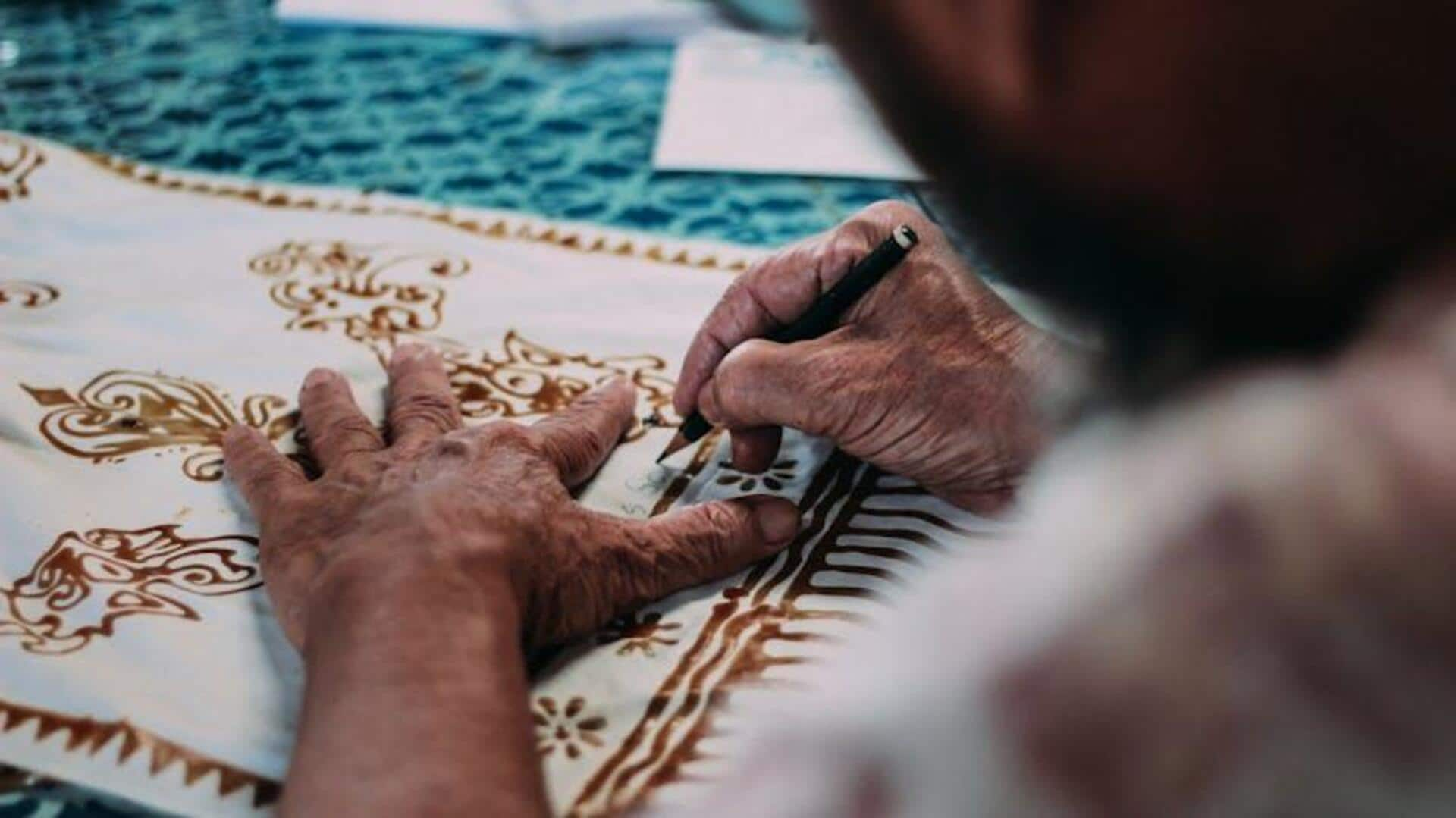
Exploring batik: An Indonesian textile art
What's the story
Batik is a traditional textile art from Indonesia that uses a wax-resist dyeing technique. The technique involves applying wax to the fabric in particular patterns, preventing the dye from coloring those areas. The result is a beautifully intricate design that showcases Indonesia's rich cultural heritage. Batik has also been recognized by UNESCO as an Intangible Cultural Heritage of Humanity. Here's more on batik.
Origins
Historical roots of batik
Batik originated more than 1,000 years ago in some regions of Asia and Africa. However, it is in Indonesia that batik has thrived and transformed into a refined art form. The island of Java is especially famous for its batik making. Traditionally, batik was used as a form of communication between Javanese royalty and nobility, with certain patterns indicating social status or regional identity.
Methods
Techniques used in batik creation
The process of creating batik is pretty elaborate. First, artists draw designs on fabric using hot wax with the help of tools like canting or brushes. The fabric is dyed after the wax hardens; the waxed areas repel the dye and stay uncolored. Several layers of waxing and dyeing can be used to create intricate designs with different colors. The wax is finally removed by boiling or scraping it off.
Importance
Cultural significance in Indonesia
In Indonesia, batik is steeped in culture, not just beauty. It is a part of ceremonies like weddings and births, where certain patterns are selected for their symbolism. Further, each region has its own style reflecting local customs and beliefs. For example, Yogyakarta's batiks usually have earthy tones while Pekalongan's are colorful.
Evolution
Modern adaptations of batik art
While traditional ways still rule the roost, today's artists have reimagined batik for modern fashion trends - be it clothing, accessories, home decor items, etcetera. Designers are toying with new fabrics, innovative motifs, modern color palettes, making this ancient craft a global sensation. As more and more people discover the versatility and beauty underlying these textiles, demand continues to soar across the world.